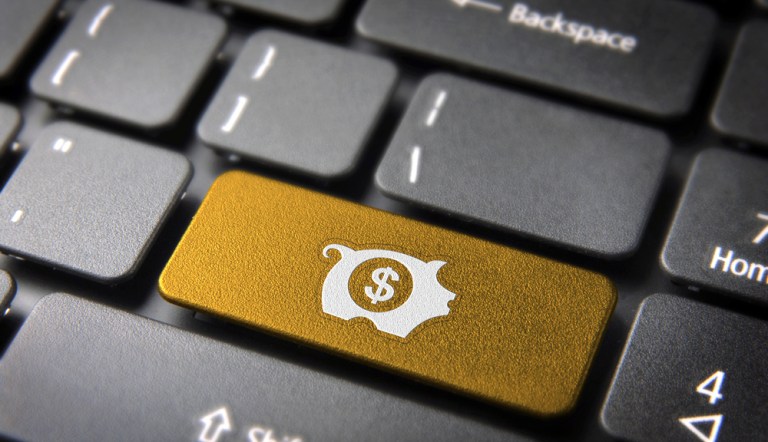
The traditional piggy bank may have outlived its usefulness in economies that are less and less cash-based, but that doesn’t mean it’s time to retire the concept entirely. It’s just time to introduce consumers to its digital counterpart — a virtual piggy bank where, instead of collecting spare change, consumers can collect their cash back and rewards all in a single place.
Nana Murugesan, vice president and general manager at Samsung Electronics America, said this is what Samsung has been building up to in recent years, continually tucking new value-add features into its ecosystem.
The most recent feature weaves Samsung Rewards into Samsung Pay in a way that gives users reward points every time they use the mobile payment service, no matter what the customer is buying, where they’re doing business or how they’re paying for it.
Those points accrue in the user’s Samsung Pay wallet, incentivizing them to use the digital wallet again next time to leverage those funds. The more that consumers interact across Samsung’s ecosystem, the more change they get to throw into that digital piggy bank.
Samsung Rewards launched in November 2016 along with Samsung Pay to help customers derive more value from the service. The vision for Samsung Rewards has always been to scale by giving users more opportunity to engage with a wide range of experiences across channels.
There’s Samsung Pay, Samsung Health and Samsung Internet. There’s Bixby, Samsung’s intelligence platform, and various experiences within the Bixby bucket, from Bixby Home to voice and visual shopping via augmented reality (AR) capabilities on Samsung phones’ native camera app. The Korean tech giant has tens of millions of users across these services.
In a recent interview with Karen Webster, Murugesan and Sang Ahn, VP & GM, Samsung Pay, shared how the feature will enable new experiences to cement and grow consumer usage, while also benefitting merchants who opt to accept Samsung Pay and participate in Rewards.
The Challenge of the Bridge Millennial
There are certain categories in which shoppers prefer to touch and feel products before they buy. Apparel and jewelry can be difficult to sell online for this reason. It’s common for customers to do their research on the web or mobile channel, then head to a store to get the tactile information they need to make a purchase decision.
Yet, oddly enough, many consumers go to the store and then still make a purchase online. This is a major habit among who Webster refers to as “bridge millennials,” consumers between 30 and 40 years old who are on the older end of the millennial generation and/or the younger end of Gen X.
Bridge millennials have careers and disposable income. They are paying off, or have paid off, their student loans. Many are married and starting families. They are more established in spending.
Most importantly, said Ahn, they are the first generation of connected consumers who have grown up using mobile as a tool for how they shop — and not just as a way to pay for things online, but as a method for product discovery and research.
When bridge millennials and other shoppers use brick-and-mortar retail to round out their research, but not to make purchases, merchants lose the opportunity to make a sale to a customer who has taken the time to walk through their doors.
Rewarding Shoppers AND Merchants
Ahn said that cash back and rewards can help connect the shopping experience to payments and tie the in-store experience to what consumers could find online.
When Samsung introduced cash back, the idea was to use the tech giant’s many channels and large, at-scale services to make shopping better for consumers, which Ahn said can also drive benefits for those physical merchants who enhance their foot traffic with online sales opportunities.
“We have a chance to give consumers a benefit,” Ahn said. “Anytime they enter through our Samsung touchpoints and complete a mobile transaction, we have a chance to give them a distinct benefit: a cash back reward, plus Samsung Rewards if they are using Samsung Pay. There is a distinct reason to shop with us if you’re on our platform.”
Ahn said the cash back program is live with select merchants, enabling those merchants to offer their own cash back rewards to entice consumers to complete purchasing activity in-store. It is separate from Samsung Rewards and from points or rewards offered by credit cards stored in the Samsung Pay wallet, although these components can stack to deliver even greater benefits to the consumer.
Once value is stored in the Samsung Pay wallet, Ahn said, it drives further action and encourages the customer to use Samsung Pay again.
Murugesan added that consumers are already able to get deals from merchants, but the process for accessing those deals can be fragmented. He said that’s why Samsung saw an opportunity to centralize everything and put all the cash back in one place — a single digital piggy bank that simplifies how the market already works and what it already offers, rather than innovating something completely new.
What’s Next
Merchants, said Murugesan, want to drive traffic and introduce new channels that they aren’t already using. They want distinctive ways to communicate with consumers.
Samsung, as a tech company, has the potential to give them that, he said, so the company is working to position itself as a win for the entire ecosystem, including both merchants and consumers. It aims to grow its cash back program to more merchants in the next several months.
In addition, by the end of May, customers will have the option to buy points within Samsung Rewards to round out rewards purchases they wish to make but are just short of earning. Murugesan said this is a common demand and has been introduced already by various other loyalty programs.
“We want our consumers to know that Samsung is the most rewarding place to shop,” Ahn summarized.